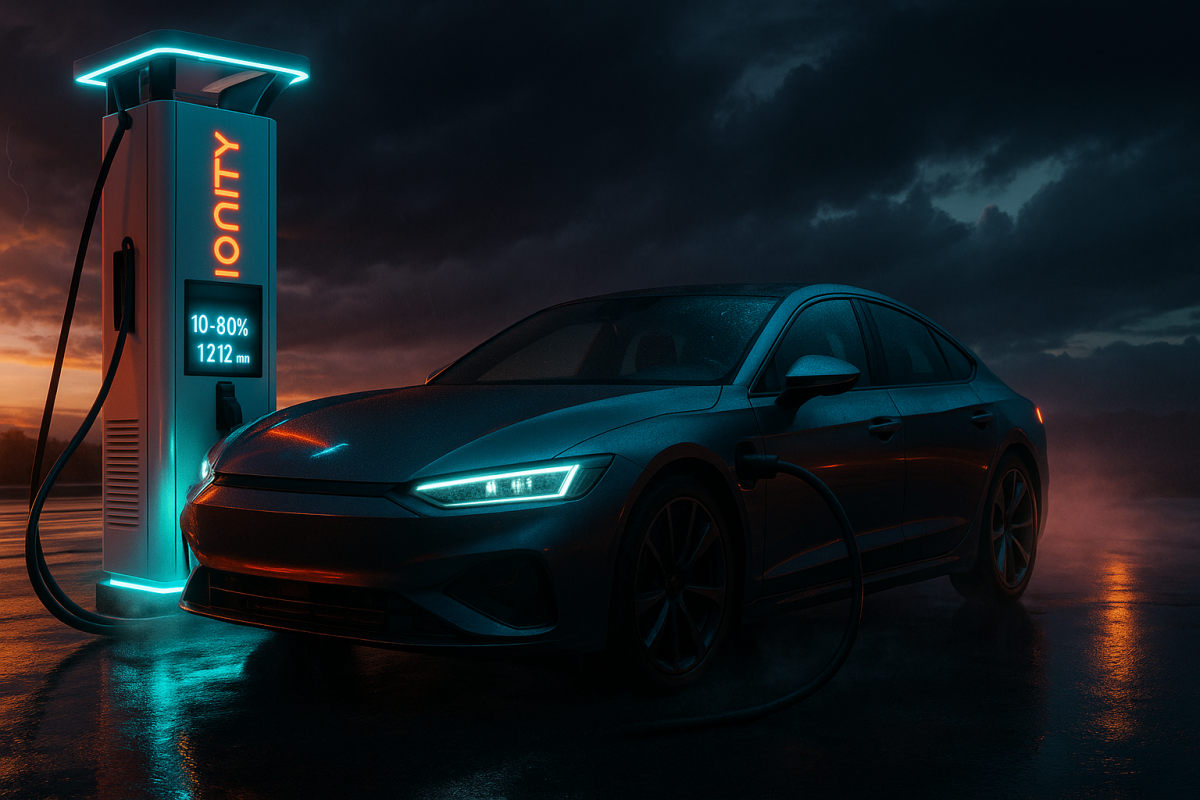
Understanding EV Battery Technology: Cost Fears and Faster Charging
For many electric vehicle (EV) drivers, battery technology is a topic of great interest. This is especially true when considering that the battery can make up as much as 25% of an EV’s total cost. A recent survey highlighted that 62% of Americans see high battery repair costs as a major barrier to switching to electric vehicles. As someone who breaks down EV battery tech for everyday users, my goal is to simplify the science so you can understand what matters most—how your EV performs and how quickly you can get back on the road.
The evolution of EV batteries is happening in two distinct phases. The first involves silicon-carbon (Si-C) batteries, which are already making their way into production. These upgrades bring improvements in range and faster charging times that can turn a quick coffee stop into a significant boost in driving distance. The next step is solid-state batteries, like those developed by QuantumScape, which promise even more advanced features such as higher energy density, thinner battery packs, and improved handling.
What’s Real Today: Silicon-Carbon (Si-C) Batteries
Silicon-rich anodes are being integrated into today’s lithium-ion production lines, allowing for quicker development and lower costs. Companies like Sila are leading the charge with their Titan Silicon technology, which offers a 20–25% increase in energy density compared to traditional graphite cells. Their Moses Lake plant is set to begin operations in 2025, signaling a shift toward more efficient battery production.
On the road, Si-C technology has already demonstrated impressive performance. For example, a Polestar 5 prototype equipped with StoreDot’s silicon-dominant cells was able to charge from 10% to 80% in just 10 minutes on a 77-kWh battery, maintaining over 310 kW of power. This means that drivers can experience more range without increasing the size of the battery pack, and they can enjoy faster charging that holds up across the entire system—not just on individual cells.
What QuantumScape Brings Next: Packaging and Charge Rhythm
QuantumScape’s QSE-5 B-sample has shown promising results, with energy densities of around 301 Wh/kg and 844 Wh/L at C/5 and 25°C. It also achieved a 10–80% charge in 12.2 minutes at 45°C. While these numbers may seem like bragging rights, they represent real advancements that could change how EVs are designed and driven.
Higher energy density allows engineers to shrink battery packs without sacrificing capacity. This means thinner floors, lower seats, and more legroom in crossovers and pickups. Additionally, the ceramic separator used in QuantumScape’s batteries is designed to handle abuse better than traditional polymer films, which is beneficial for families and fleet vehicles.
Another key factor is scalability. QuantumScape’s Cobra separator process has entered baseline production, offering a 25× faster heat treatment and a smaller equipment footprint compared to previous setups. This is a crucial step in moving from lab success to mass manufacturing.
Fast Charging: 10 Minutes vs 12—What the Numbers Mean
Both Si-C and QuantumScape technologies offer fast charging capabilities, but there are differences in how they perform. The Polestar/StoreDot demonstration showed that a full 77-kWh pack could be charged from 10% to 80% in just 10 minutes. QuantumScape’s cell-level tests reported a similar time of 12.2 minutes, though under different conditions.
While the exact timing may vary based on factors like temperature and state of charge, the overall trend is clear: the days of 30–40-minute highway stops are becoming a thing of the past. Whether it's Si-C or QuantumScape, both technologies are pushing the boundaries of what's possible in EV charging.
Plain-English Battery Box: Key Terms Explained
- Wh/kg (energy by weight): Think of this as “gas in the tank per pound.”
- Wh/L (energy by volume): Imagine “gas in the tank per liter of space.”
- W/kg (power): This measures how hard you can push or how fast you can charge.
QuantumScape’s QSE-5 B-sample has shown ~301 Wh/kg and ~844 Wh/L, with a 10–80% charge in 12.2 minutes under specific test conditions.
What This Means for Real People
Road-trip rhythm: With Si-C packs, a 10-minute coffee stop can add a substantial amount of range. With QuantumScape-class cells, a near-12-minute stop does the same, and the denser pack helps the car feel more stable once you're back on the road.
Cabin space: Families will notice the difference. Higher Wh/L means designers can lower floors and seats without compromising legroom, which is a real upgrade in crossovers, three-row SUVs, and lifestyle pickups.
Ownership: Si-C keeps costs closer to what automakers are already familiar with, which helps keep pricing competitive. QuantumScape’s value becomes apparent when the denser pack allows for overall improvements in comfort, cargo space, ride quality, and handling without requiring a larger battery.
Quick Glance: Now vs. Next
Now (2025–2027): Si-C batteries are expected to become widely available. They are designed for existing production lines and have already demonstrated 10-minute pack charging. Look for them first in premium or tech-flagship trims.
Next (as QuantumScape scales 2027-): Higher Wh/L will reshape vehicle packaging, leading to thinner floors, a lower center of gravity, a calmer ride, and cleaner steering. The Cobra process brings a realistic scale story, with a 25× faster separator heat treatment than previous methods.
My Verdict
If you're shopping for an EV soon, go with silicon-carbon when it becomes available on the trim you want. You'll get more range in the same footprint and fast charging that's already been tested at full-pack scale. If you're interested in how an EV feels over the next wave, keep an eye on QuantumScape. Its measured energy density and ongoing Cobra scale-up suggest cars with lower floors, better body control, and quick, repeatable charge stops once production matures.
That’s the clear story your passengers will notice: Si-C improves today’s EV; QuantumScape sets up tomorrow’s.
0 comments:
Ikutan Komentar